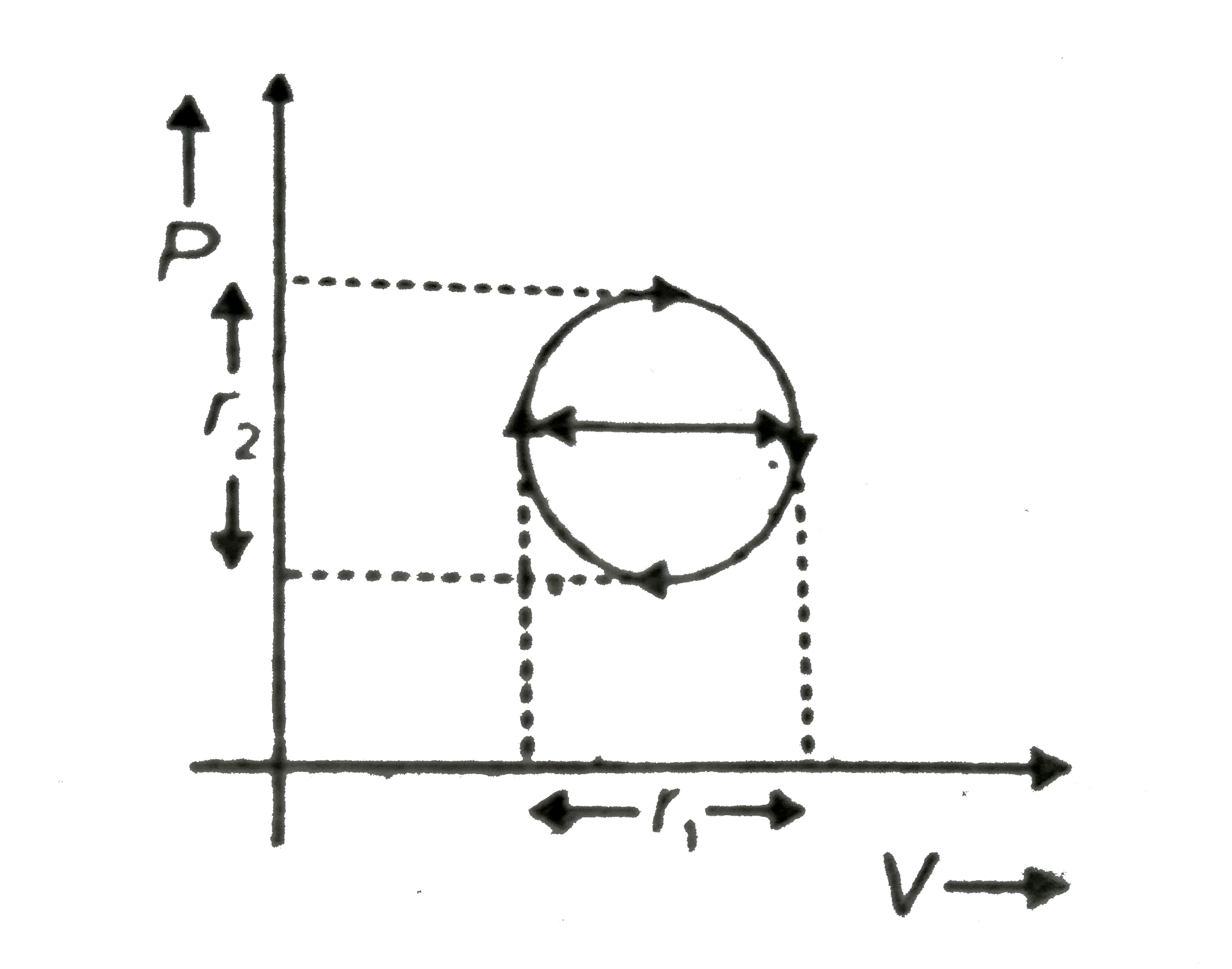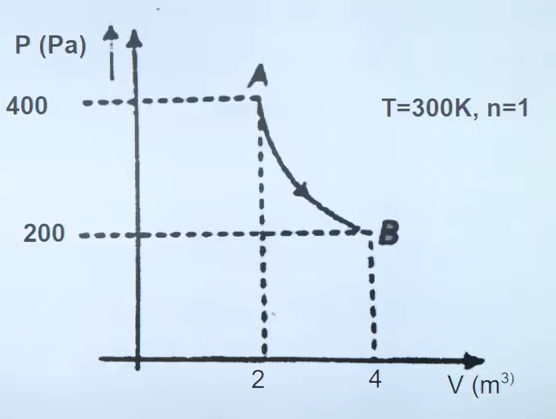When 500 calories heat is given to the gas X in an isobaric process, its work done comes out as 142.8 calories . The gas X is
O2
NH3
He
SO2
The correct Answer is:A
To determine the identity of gas X, we can use the information provided about the heat transfer, work done, and the relationship between heat capacities in an isobaric process.
1. Understanding the Process:
- The process is isobaric, meaning it occurs at constant pressure. In this case, the heat added to the system (gas X) is given as Q=500 calories.
2. Work Done:
- The work done by the gas during this process is given as W=142.8 calories.
3. Applying the First Law of Thermodynamics:
- According to the first law of thermodynamics, the change in internal energy (ΔU) is given by:
ΔU=Q−W
- Substituting the values:
ΔU=500calories−142.8calories=357.2calories
4. Relating Heat Capacities:
- In an isobaric process, the relationship between the heat capacities is given by:
CpCv=γ
- Where Cp is the molar heat capacity at constant pressure and Cv is the molar heat capacity at constant volume.
5. Using the Heat Transfer:
- We know that:
Q=nCpΔT
- And for internal energy:
ΔU=nCvΔT
- Thus, we can express the ratio of heat capacities as:
CpCv=QΔU=500357.2
6. Calculating the Ratio:
- Performing the calculation:
CpCv=500357.2≈1.4
7. Identifying the Type of Gas:
- The value γ≈1.4 is characteristic of diatomic gases (like O2, N2, etc.).
8. Conclusion:
- Therefore, gas X is a diatomic gas. Given the context, it is likely O2 (oxygen).
Final Answer:
Gas X is O2 (oxygen).
---
- The process is isobaric, meaning it occurs at constant pressure. In this case, the heat added to the system (gas X) is given as Q=500 calories.
- The work done by the gas during this process is given as W=142.8 calories.
- According to the first law of thermodynamics, the change in internal energy (ΔU) is given by:
ΔU=Q−W
- Substituting the values:
ΔU=500calories−142.8calories=357.2calories
- In an isobaric process, the relationship between the heat capacities is given by:
CpCv=γ
- Where Cp is the molar heat capacity at constant pressure and Cv is the molar heat capacity at constant volume.
- We know that:
Q=nCpΔT
- And for internal energy:
ΔU=nCvΔT
- Thus, we can express the ratio of heat capacities as:
CpCv=QΔU=500357.2
- Performing the calculation:
CpCv=500357.2≈1.4
- The value γ≈1.4 is characteristic of diatomic gases (like O2, N2, etc.).
- Therefore, gas X is a diatomic gas. Given the context, it is likely O2 (oxygen).
Gas X is O2 (oxygen).
Topper's Solved these Questions
Similar Questions
Knowledge Check
When heat in given to a gas in an isobaric process, then
AThe work is done by the gasBInternal energy of the gas increasesCBoth (a) and (b)DNone from (a) and (b)When p calories of heat is given to a body, it absorbs q calories, then the absorbtion power of body will be :-
Ap/qBq/pCp2/q2Dq2/p2In a isobaric process the work done by a di-atomic gas is 10 J , the heat given to the gas will be :
A35 JB30 JC45 JD60 J
A sample of gas is going through cyclic process, work done by gas is

View SolutionTo raise the temperature of a certain mass of gas by 50∘C at a constant pressure , 160 calories of heat is required . When the sam mass of gas is cooled by 100∘C at constant volume 240 calories of heat is released . How many degrees of freedom does each molecule of this gas have (assume gas to be ideal) ?
View SolutionIn thermodynamic process, 200 Joules of heat is given to a gas and 100 Joules of work is also done on it. The change in internal energy of the gas is
View SolutionThe work done by 1 mole of ideal gas during an adiabatic process is (are ) given by :
View SolutionThe work done by 100 calorie of heat in isothermal expansion of ideal gas is :-
View Solution

